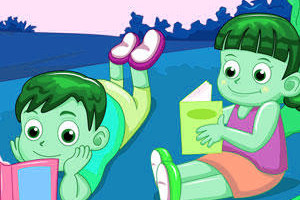5 Basic Design Concepts That Everyone Should Know
As one expands their knowledge of art and design, they start to see a pattern emerging. Much of what we learn in one medium is applicable across all mediums. Concepts learned in photography translate to sketching or painting (in fact, the same lighting methods used in modern photography are direct copies of studio lighting techniques that painters used hundreds of years ago!)
Of course, this means that these ideas are really, really important when it comes to understanding art and growing as an artist. And it also means that teaching little minds these ideas early will give them a huge advantage in anything creative! Let’s take a look at these design concepts:
1) Contrast
This one is pretty simple, but it’s really important. Contrast involves the difference between certain elements of a design, whether it be a painting, a document, or a photograph. You can show kids the importance of contrast by demonstrating it applied to different mediums:
Color choices – Bright yellow on a white paper is hard to see.
Black and white photo or sketch – Explain how light and shadow contrast to create the image.
Fashion or clothing – Textures are often used in contrast to break up similar colors. For instance, an all-black outfit is given visual appeal through the use of different patterns, such as pinstripes or paisley.
2) Negative Space
This is also called “white space,” but it doesn’t have to be white. This is simply the parts of a design, painting, or image that have no content. It’s the empty spots between the other design elements. Negative space is always important to consider because a lacking can mean work that’s unbalanced or too cluttered. By showing children a paper that’s covered in typing versus one that’s double-spaced, you can easily show the importance of white space in a practical project.
3) Balance
I would say that developing “an eye” for visuals depends pretty heavily on honing a sense of balance. The skill to create balanced may seem easy, but I would venture to guess that it’s something that takes a lot of time to perfect. An artist doesn’t just have to balance elements of the same size, but also balance text against images or patterns against solids. Balance involves weight, color, negative space, scale. A teacher can help children understand balance by having them look at magazine layouts. These are almost always professionally balanced by graphic designers so that images, words, quote boxes, and sidebars all give a sense of balance. Ask the children why they think certain elements are “heavier” or “lighter” than others in a visual sense. The answer may surprise you!
4) Unity
Unity is fairly self-explanatory. It’s all about the overall design/project/work and how different parts of it tie together to make a whole. Sometimes the style itself is the unifying factor. Other times, it may be the colors or subjects within the work. What matters is that all of the other design elements work together to create a unified finished product!
5) Repetition
Repetition is important in all manner of artistic works. Some of the most obvious and accessible examples of repetition can be found in children’s books! These easy-readers often repeat the same lines, rhythms, or ideas from start to finish. Repetition builds a theme and reinforces it.
What’s amazing is that these principles don’t just apply to visual arts! Think about how things like music make use of “negative space” and “contrast.” The names are different – and they’re applied to sound rather than images – but the ideas are still very similar.
As you can see, these unifying ideas are super important to the arts. How would you explain these ideas to children? Share your ideas below!




